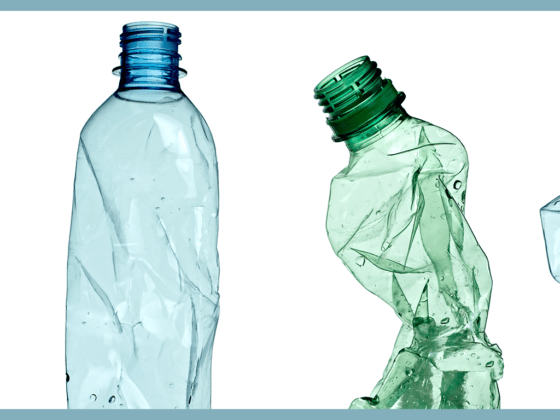DEEP DIVE RECYCLING GARBAGE CAN
By Ulrike Seidel
More than 30 years after the introduction of packaging recycling, we have plenty of garbage cans, containers and bags on our streets, but we are still often confused: What exactly belongs in the yellow garbage can? Why are crown caps made of metal allowed in there, but tinware is not? And why is plastic packaging welcome, but a plastic toothbrush forbidden?
According to the initiative “Mülltrennung wirkt” (Waste separation works), just 70 percent of yellow garbage can waste in Germany is sorted correctly. 30 percent are so-called misdirected waste. Industry experts from the Plastics Recycling Association estimate that the rate of incorrectly sorted waste is as high as 40 to 60 percent. By comparison, 98 percent of the contents of waste paper garbage cans can be recycled.
What is so difficult about waste separation?
The unconvincing rate is primarily due to the fact that a colorful mixture of recyclable materials ends up in the yellow bag – and the boundaries are not always comprehensible. A look back at the early years explains why we don’t have separate plastic and metal garbage cans. It all started more than 30 years ago. In 1991, the “Green Dot” was born. Today, the dot belongs to the dual systems that feed off the yellow bag and the yellow garbage can – and are financed by the private sector. The Packaging Act obliges industry and commerce to take back and recycle sales packaging. Manufacturers and retailers, therefore, pay a license fee to a recycler who takes over disposal and recycling – and it is precisely these recyclables that all end up in a garbage can or sack. They are separated in sorting plants – and this is where the first trap lurks.
Plastic waste as substitute fuel
Waste must be separated by type. But if the aluminum lid is still stuck to the plastic yogurt pot, it becomes difficult. Another example: cold cuts packaging for sausage and cheese, as we know them from every refrigerated shelf. The body is made of high-quality plastic, the lid foil is sometimes much thinner. If the body and lid are not separated, the more valuable part is no longer sorted by type. Either the quality of the recyclate deteriorates – or the packaging ends up in “thermal recycling” straight away. Thermal recycling? Sounds good, but it is nothing other than the use of plastic as fuel: plastic parts for which there are no mature recycling processes yet are pressed into briquettes and burned as a substitute for coal and gas – for example in cement plants. Unfortunately, climate protection and the circular economy gain nothing from “thermal recycling”.
Plastic bowls are uninvited guests in the yellow bag
But there is another catch. Hard plastics, such as clothes hangers, plastic bowls, garden chairs, children’s toys or toothbrushes often end up in the yellow bag. Makes sense, says common sense, after all they are made of recyclable plastic. Nevertheless, such items are considered uninvited guests in the sorting facilities. A phenomenon that sums up the difficulty of our recycling infrastructure in Germany: the system is organized by private enterprise. Access is only granted to those who pay a disposal fee. The fee is paid only by those who are obliged to do so by the Packaging Act.
The disposal and sorting facilities are logically optimized for the separation of typical packaging materials. “Material-equivalent non-packaging,” according to the industry term for plastic items, is not one of them and is sorted out – the final destination being an incineration plant. To reduce this waste of recyclables, some municipalities in Germany offer an additional recycling garbage can or collect hard plastics at the recycling center. However, this sounds more like a stopgap solution, not an effective recycling chain.
And there are other critical materials in the yellow garbage can: aluminum foil. Aluminum foil is an excellent recycling material. But because it is not covered by the Packaging Act, manufacturers do not pay any fees to the dual system. Recyclers could therefore theoretically refuse to recycle it, even though there are other materials in the recycling chain that are exactly the same material – such as yogurt cup lids. The solution? Environmental protection organizations are calling on consumers to engage in a kind of civil disobedience. Disposing of aluminum foil in the residual waste would be a waste of raw materials. So put it in the yellow garbage can.
We need to collect and separate much more
“For a true circular economy, we would have to collect much more and separate more accurately,” says Malte Biss, head of flustix. He praises the efforts of manufacturers, retailers and waste disposal companies, but still calls for a significant increase in the system’s performance. “Exported waste should not appear in the quota – and it would be best if it were not exported in the first place. We need these recyclables. It’s absurd that we burn collected plastics while, on the other hand, industry produces huge amounts of new plastic – and this is cheaper than the recyclates thanks to subsidies in the form of tax breaks.”
Biss calls for these tax breaks to be abolished and for the recycling industry to be strengthened instead, as well as for the recycling infrastructure and educational campaigns to be promoted to demystify the mystery of the yellow garbage can. The flustix head explains, “Because the system will only run successfully if people at home understand how to separate their waste properly and do the appropriate groundwork.”
One of these campaigns is called “Waste separation works”. The initiative includes manufacturers, retailers (including Edeka) and waste disposal companies (including Alba). On the website, you can find lists of recyclable materials, among other things. What all belongs in the yellow bag, you can find here. What belongs in the other garbage cans, you can find here.
 English
English Deutsch
Deutsch




